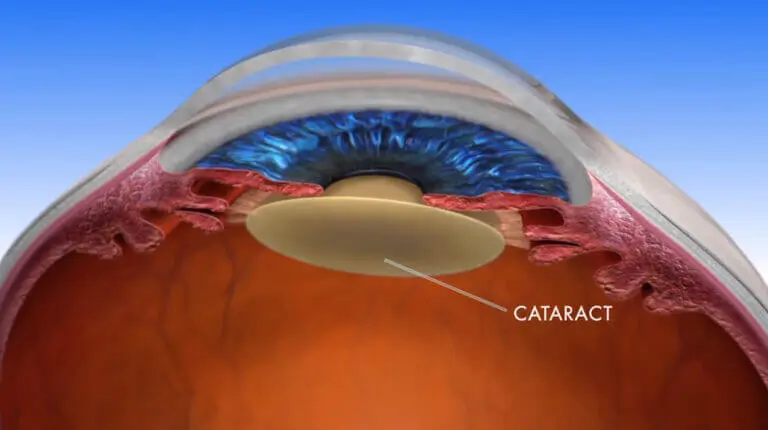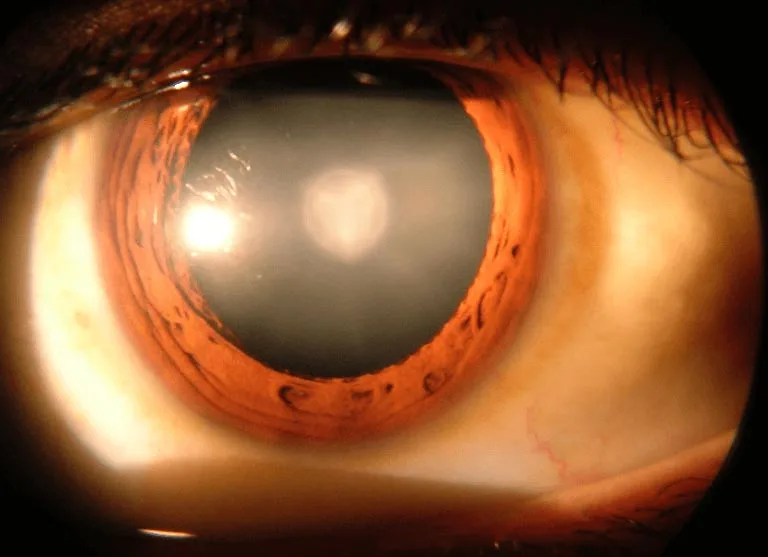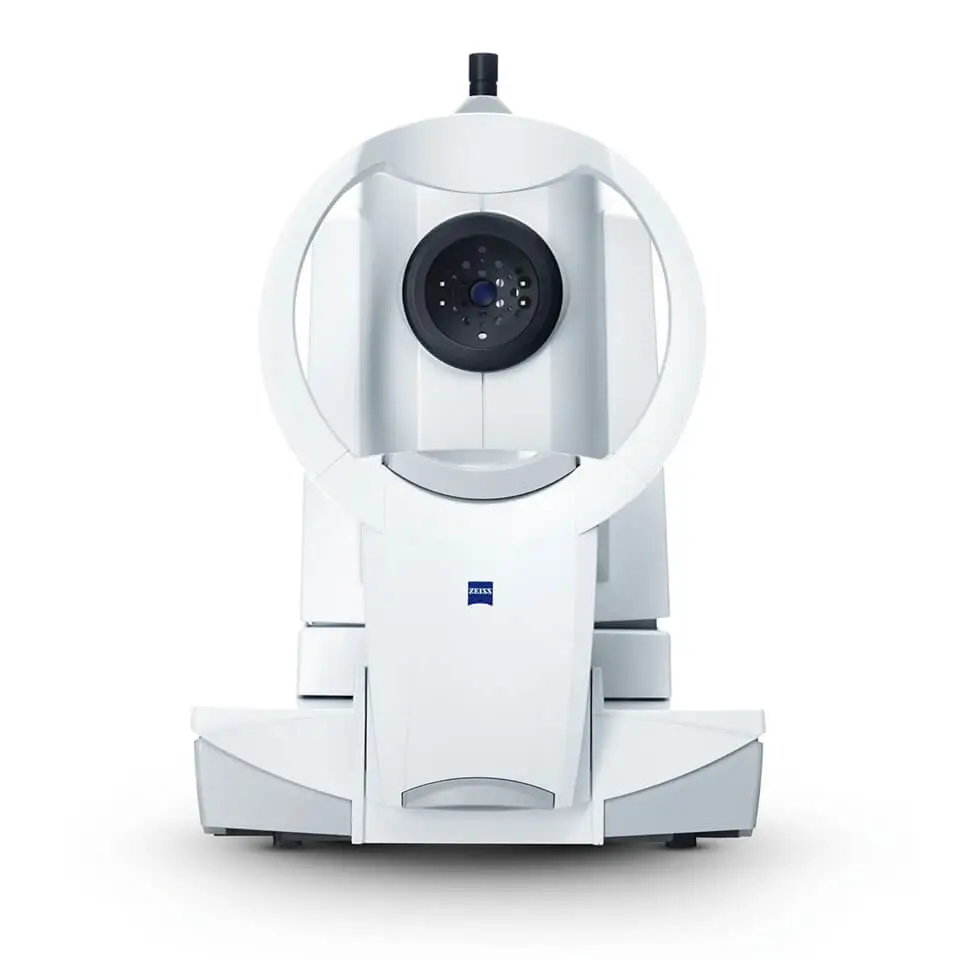






















The PHACO machine is an ultra-modern technology equipment used by doctors to replace the cataract affected lens in your eye and implant an artificial lens during the cataract surgery procedure. It is one of the best technologies available presently to do cataract surgery, used by doctors across the globe.
A Keratometer, also known as an ophthalmometer, is a diagnostic instrument for measuring the curvature of the anterior surface of the cornea, which is used to assess the amount and axis of astigmatism. Keratometry is the measurement of the corneal curvature determining the power of the cornea.
The binocular slit-lamp examination provides a stereoscopic magnified view of the eye structures in detail, enabling anatomical diagnoses to be made for a variety of eye conditions. A second, hand-held lens is used to examine the retina. A slit-lamp exam is usually done during a regular checkup with your eye doctor before the cataract surgery procedure.
NC Tonometer is used to perform Tonometry. Tonometry is a quick and simple test that checks the pressure inside your eyes. The results can help your doctor see if you're at risk for glaucoma. The pressure inside your eye is called intraocular pressure (IOP).
Applanation tonometers are used to measure the Intraocular Pressure, or IOP, of the eye. IOP is often measured in millimeters of Mercury, (mmHg) and is determined by the amount of force that is needed to flatten, or applenate, a consistent area of the cornea. A topical anesthetic is often used because of the contact required.
In cataract surgery, or other lens-replacement procedures, vision is improved by replacing the eye’s natural lens with an intra-ocular lens (IOL). IOLs come in different powers and sizes to compensate for each patient’s individual needs. For best vision after cataract surgery, precise measurements must be taken to determine which IOL to implant.
Optical biometry is a highly accurate non-invasive automated method for measuring the anatomical characteristics of the eye. Accurate measurements are critical for determining the correct power of an IOL before it is implanted during cataract surgery. Before implantation the correct lens power needs to be determined.
An operating surgical microscope is the most important optical instrument in the modern era of ophthalmic surgeries. It provides the surgeon with a magnified and illuminated high-quality image of the small ophthalmic structures. Being binocular the surgical microscopes gives the additional benefit of high-quality stereoscopy. Our microscopes are high-end with video recording facilities.
To take the place of the clouded human lens, a precisely engineered artificial lens called the intraocular lens, or “IOL”, is implanted into the eye at the time of cataract surgery. Unlike a contact lens, it is permanently fixated inside the eye.








When we are young, the natural lens inside our eyes is clear. Light passes through the clear lens and is focused onto the retina at the back of the eye which sends signals to the brain via the optic nerve. With age, the proteins in the eye form clumps, and the lens gradually becomes more and more opaque. This obstructs the passage of light and interferes with vision. A cataract in the eye makes things look blurry, hazy, or less colorful.
Cataract symptoms include cloudy or blurred vision, distorted or double vision, sensitivity to light and glare, difficulty seeing in poor lighting conditions, difficulty in distinguishing changes in contrast, and fading of colors. Cataract in eye causes people to feel as if they are living in a perpetual fog or looking through dirty eyeglasses. Everyday tasks such as driving, reading, and recognizing faces is affected. If allowed to progress, it can also lead to cataract blindness.
No, once you develop cataracts, their growth cannot be reversed. However, cataract blindness can be reversed with a cataract operation that would involve the implantation of intraocular lens (cataract with iol).
Yes. Cataract surgery procedure is one of the most commonly performed surgeries in the world and has a very good safety record, with minor or very rare complications.
Yes – if left untreated, the cataract can lead to continued vision loss, which can affect day-to-day living and quality of life. As it becomes severe, the maturing cataract can turn the lens completely white and you could probably only distinguish between light and dark. Without treatment, it could eventually lead to total cataract blindness.An ophthalmologist can provide you with an accurate cataract diagnosis and advice you on cataract treatment options.
There is no significant difference in post op outcome.
Cataract pathophysiology – Other than aging, cataract risk factors include a previous eye injury or inflammation, a previous eye surgery, excessive exposure to sunlight (ultraviolet-B rays), medical conditions such as diabetes and high blood pressure, genetic abnormalities, smoking, ionizing radiation (treatment for cancer) and prolonged use of corticosteroid medications.
Diabetic cataract surgery – Patients with diabetes have multiple issues which can lead to diabetic cataract surgery complications. Though cataract surgery in diabetic patients poses many challenges, cataract procedure can be successfully performed in diabetic patients with careful preoperative planning, extra attention during surgery, and close supervision after cataract surgery. Though people having cataract with diabetes require more extensive evaluations before cataract operation and need close post-operative supervision, they can achieve excellent vision after cataract surgery if their blood glucose levels are well controlled.
1, Tapovan Society Nr. Nehrunagar Cross Road Satellite, Ahmedabad, Gujarat - 380015 | TEL: +91 7926753534
Opp. Z. K. Hotel Relief Road, Ahmedabad, Gujarat - 380001 | TEL: +91 7925506257
307-311, Iconic Isanpur, Near Honda showroom, Next to Indian Oil Petrol Pump, Naroda Narol Highway, Isanpur, Ahmedabad, Gujarat - 382443 | TEL: +91 9979393783
102,103, B Square 2, Vikram Nagar, Iscon-Ambli-Bopal Road, Ahmedabad, Gujarat - 380054 | TEL: +91 8160755086